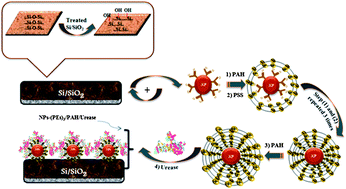Urease capacitive biosensors using functionalized magnetic nanoparticles for atrazinepesticide detection in environmental samples
Abstract
A new atrazine

* Corresponding authors
a
Laboratory of Interfaces and Advanced Materials-LIMA, Faculty of Sciences, University of Monastir, Tunisia
E-mail:
braham.yosra@yahoo.fr
Fax: +216 73 500 278
Tel: +216 73 500 276
A new atrazine

 Please wait while we load your content...
Something went wrong. Try again?
Please wait while we load your content...
Something went wrong. Try again?
Y. Braham, H. Barhoumi and A. Maaref, Anal. Methods, 2013, 5, 4898 DOI: 10.1039/C3AY40579F
To request permission to reproduce material from this article, please go to the Copyright Clearance Center request page.
If you are an author contributing to an RSC publication, you do not need to request permission provided correct acknowledgement is given.
If you are the author of this article, you do not need to request permission to reproduce figures and diagrams provided correct acknowledgement is given. If you want to reproduce the whole article in a third-party publication (excluding your thesis/dissertation for which permission is not required) please go to the Copyright Clearance Center request page.
Read more about how to correctly acknowledge RSC content.
 Fetching data from CrossRef.
Fetching data from CrossRef.
This may take some time to load.
Loading related content
